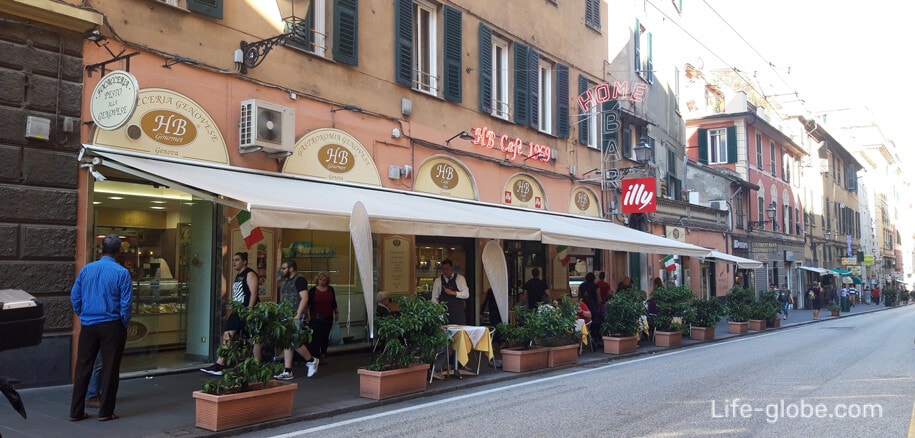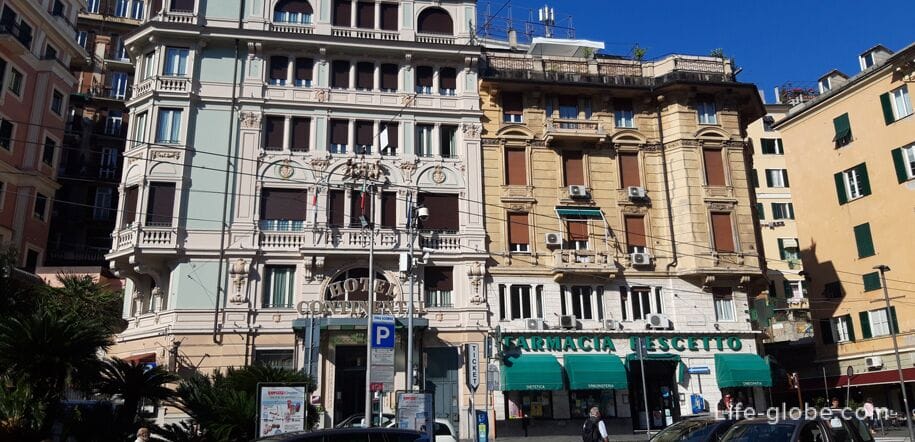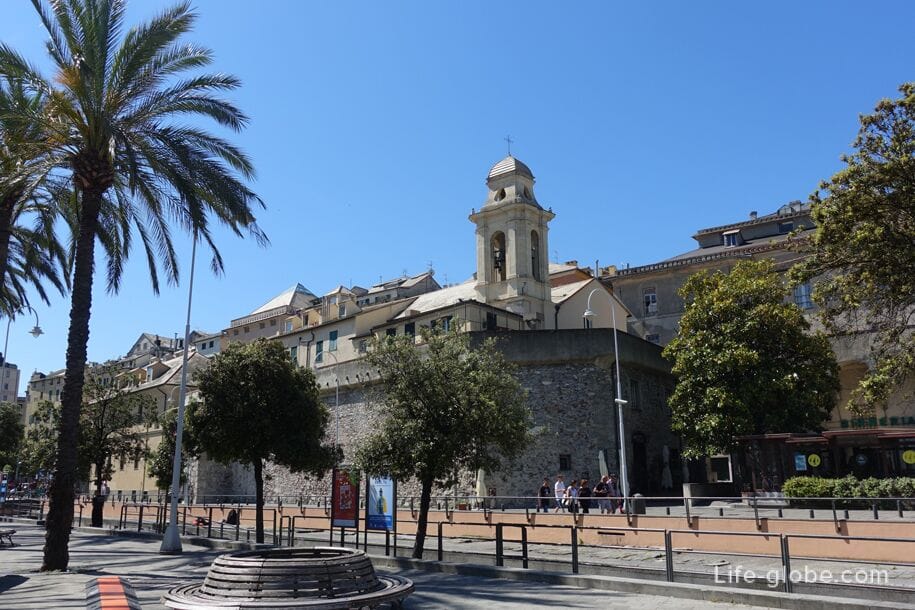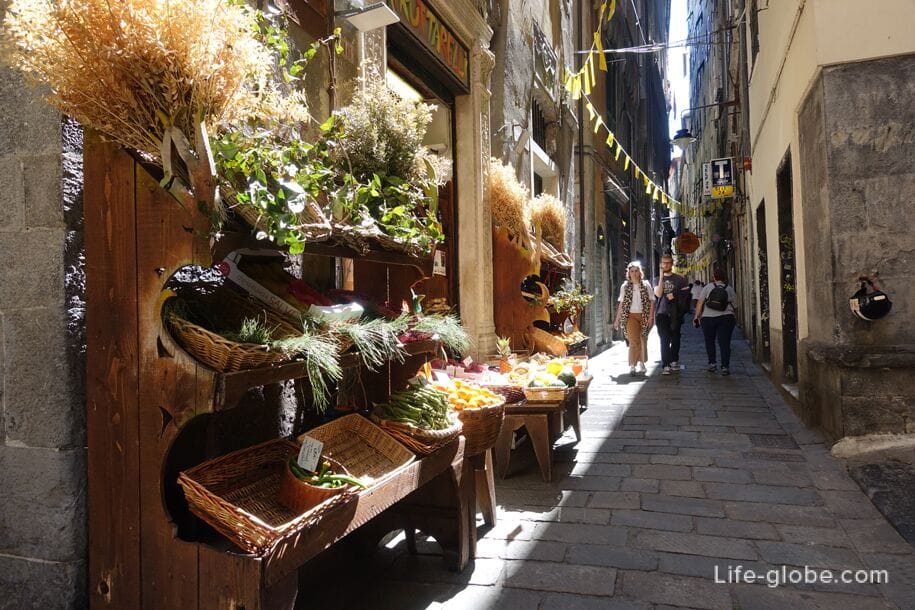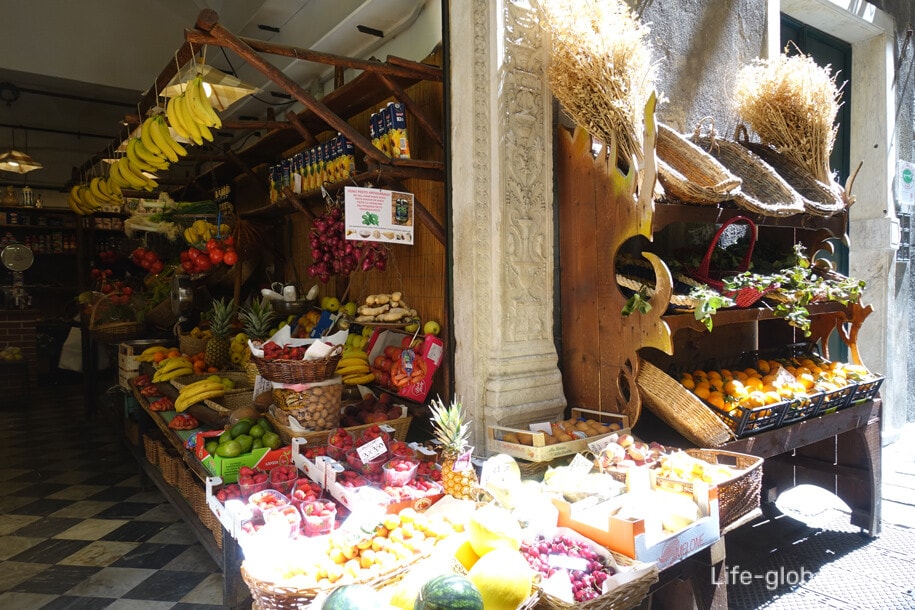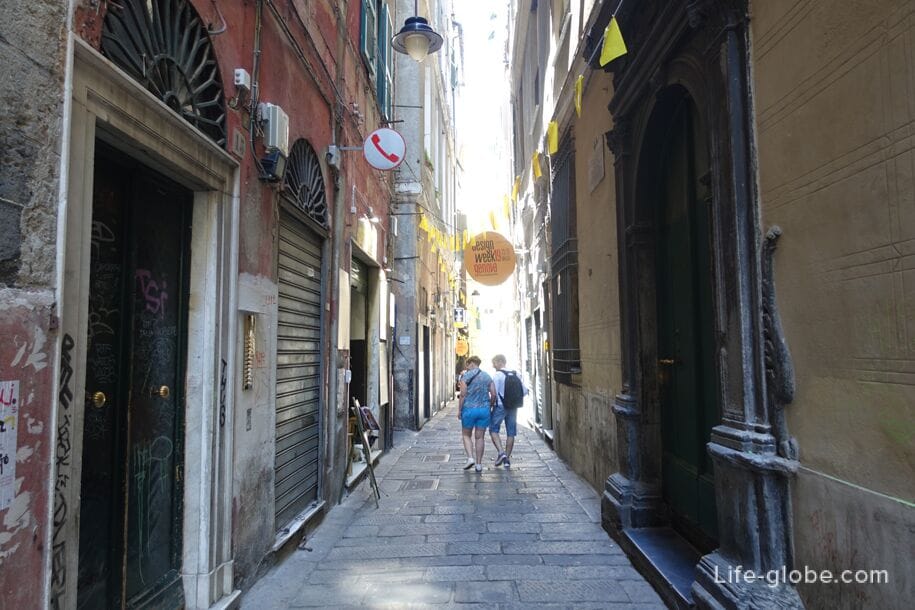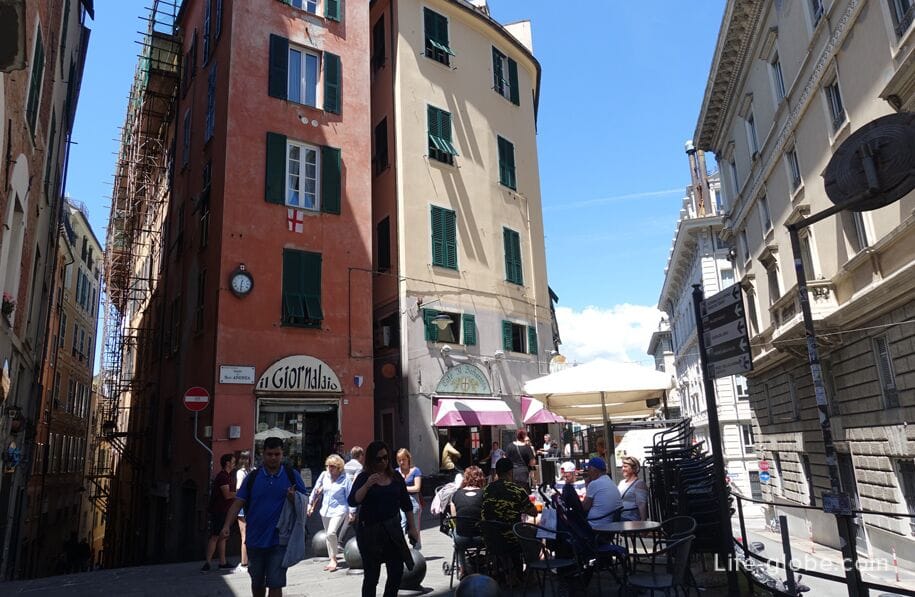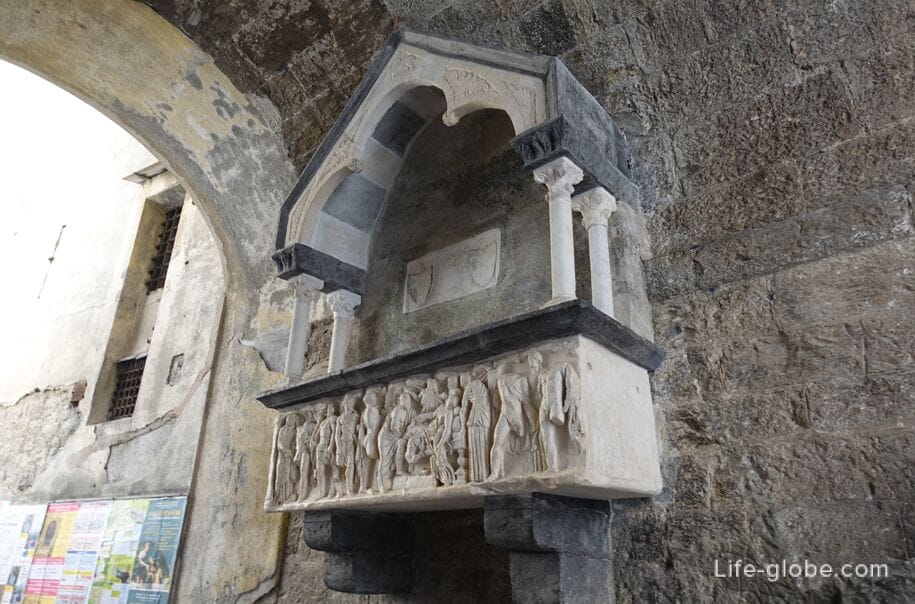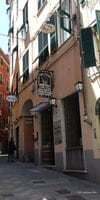The historical center of Genoa or the old town of Genoa (Centro storico di Genova) is one of the largest and most densely populated historical centers in Europe. Its area is 113 hectares.
Part of the historical center of Genoa is listed as a UNESCO World Heritage Site.
The history of the center of Genoa is inextricably linked with the beginning of the history of the city, from the beginning of the construction of the first houses on the Ligurian hill.
Today, the historical center of the city is one of the longest in Europe. It stretches from east to west - from the hill of Carignano (Carignano) to the train station of Principe (Genova Piazza Principe) and Villa Principe (Villa del Principe) - the former residence of Admiral Andres Doria.
The structure and architecture of the historical center of Genoa reflect different eras, including the Middle Ages and modernity, expressed in the expansion of some streets and the restoration of buildings.
The very center of the old town is a maze of narrow streets (caruggi) with small attractive squares and an abundance of attractions.
Along the streets, historical buildings rise in dense rows, including churches, cathedrals and former palaces, some of which now house museums. In some of the historical buildings today there are shops, souvenir shops, cafes, bars, restaurants and accommodation facilities (hotels, apartments)
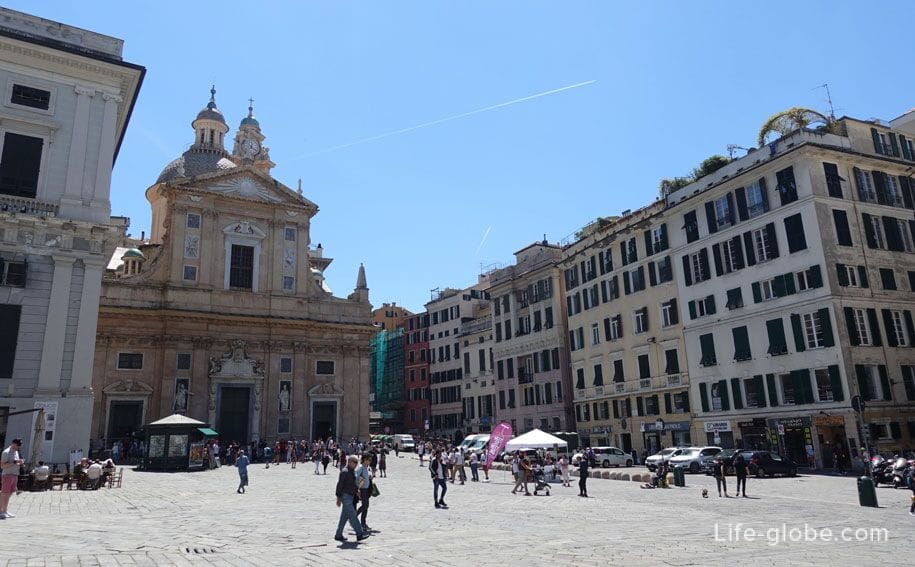
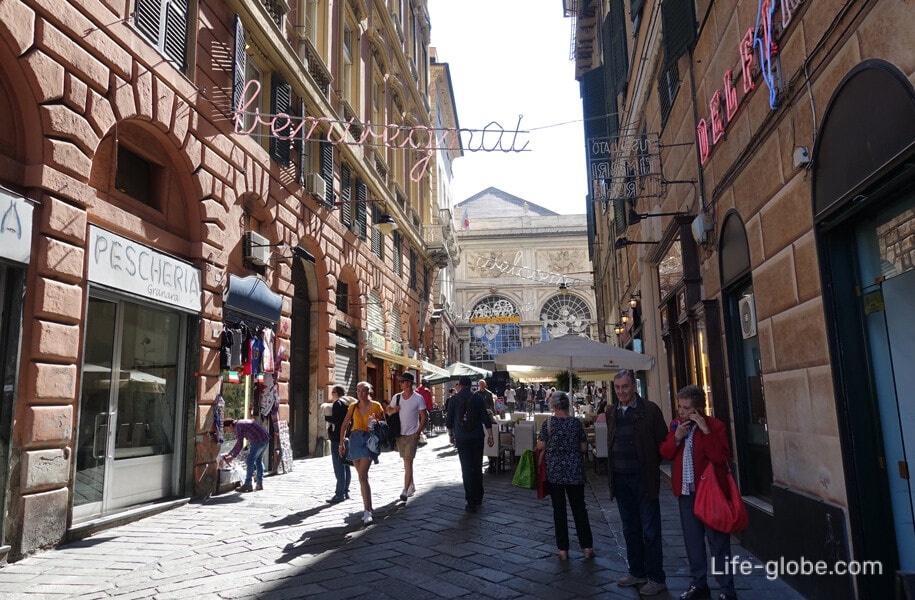
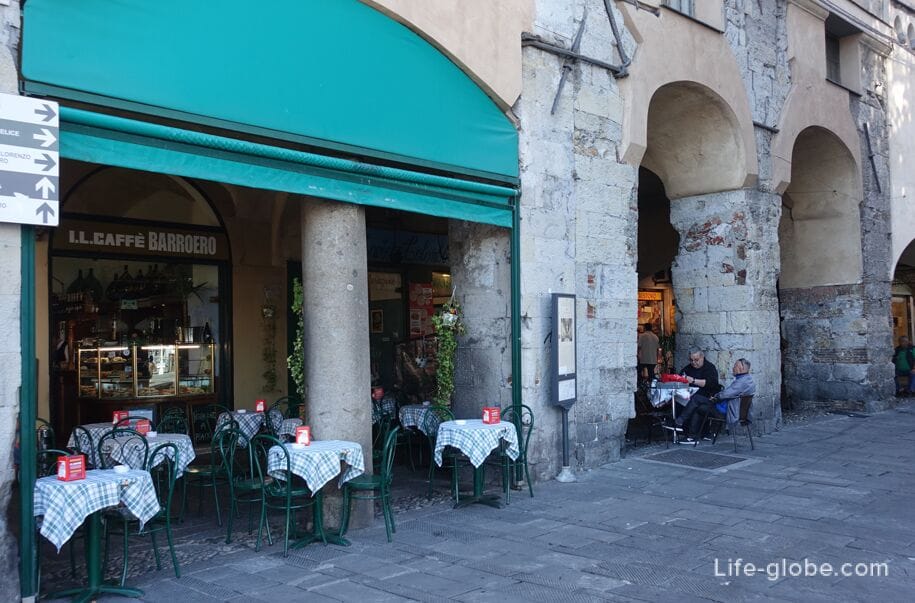
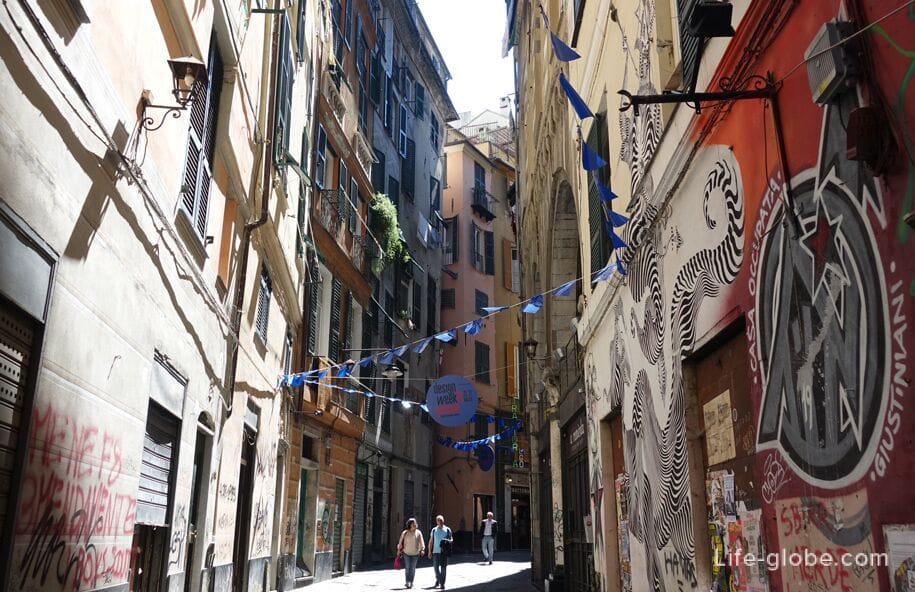
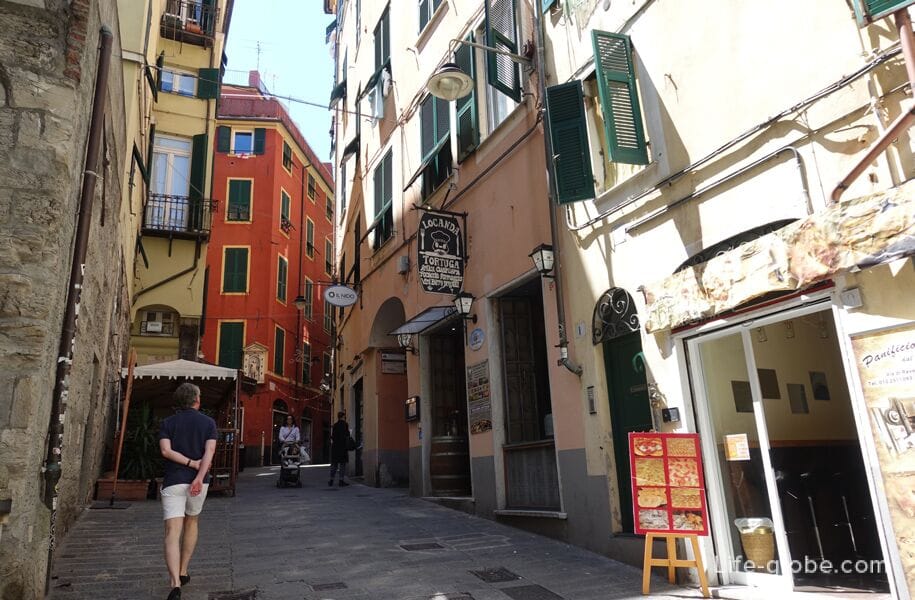
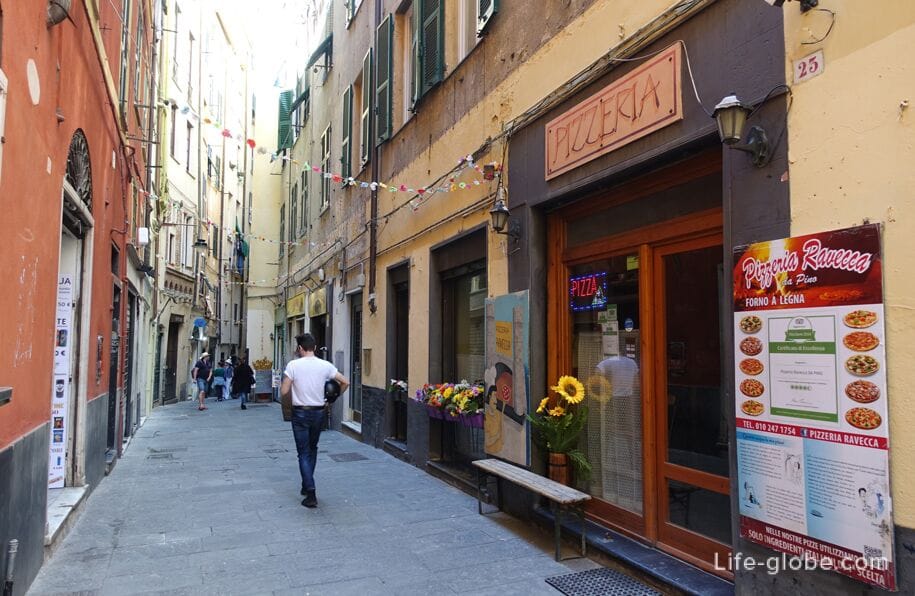

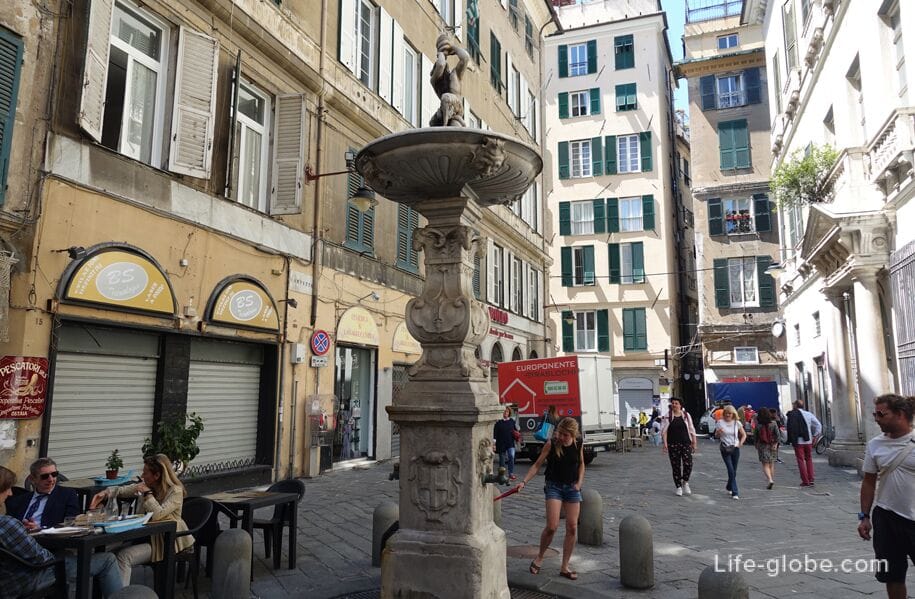
The historical center of Genoa includesThe old port (Porto antico di Genova) with a beautiful wide embankment.
The old port is now part of the major port of Genoa and is used as a marina, residential and tourist center, as well as a place of entertainment and cultural services.
In the port there are: attractions, an aquarium, a botanical garden, a panoramic elevator, museums, a Ferris wheel, places for walking and recreation, where various tourist, musical, cultural and sports events are held. More about the Old Port of Genoa...
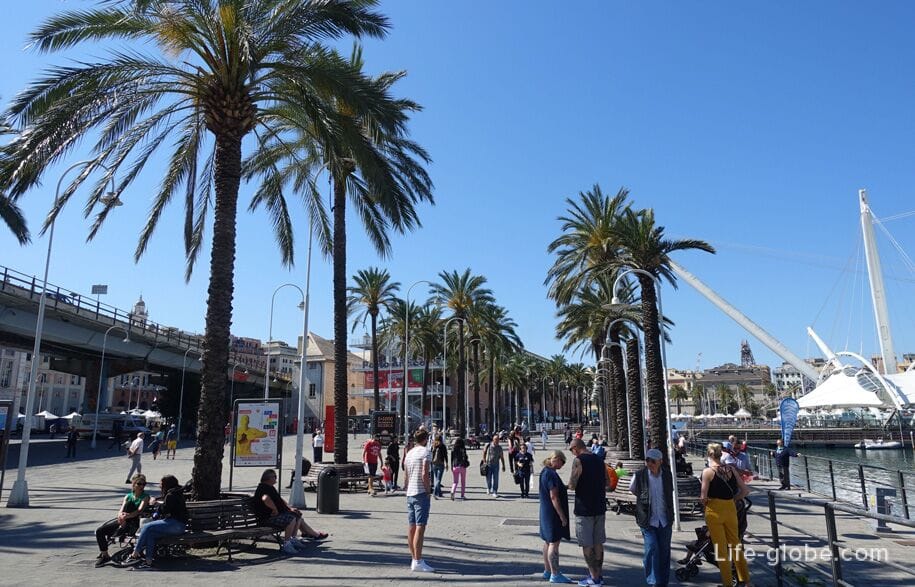
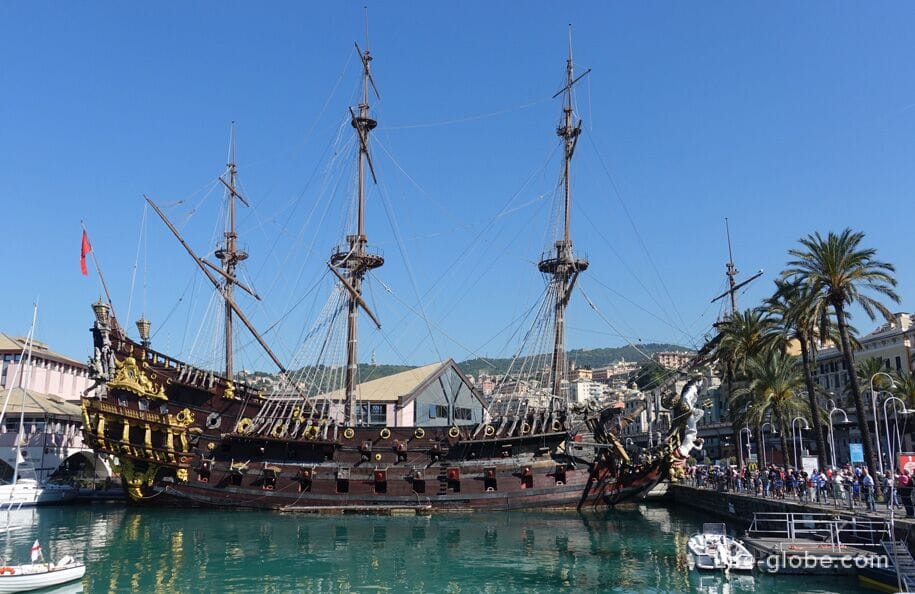
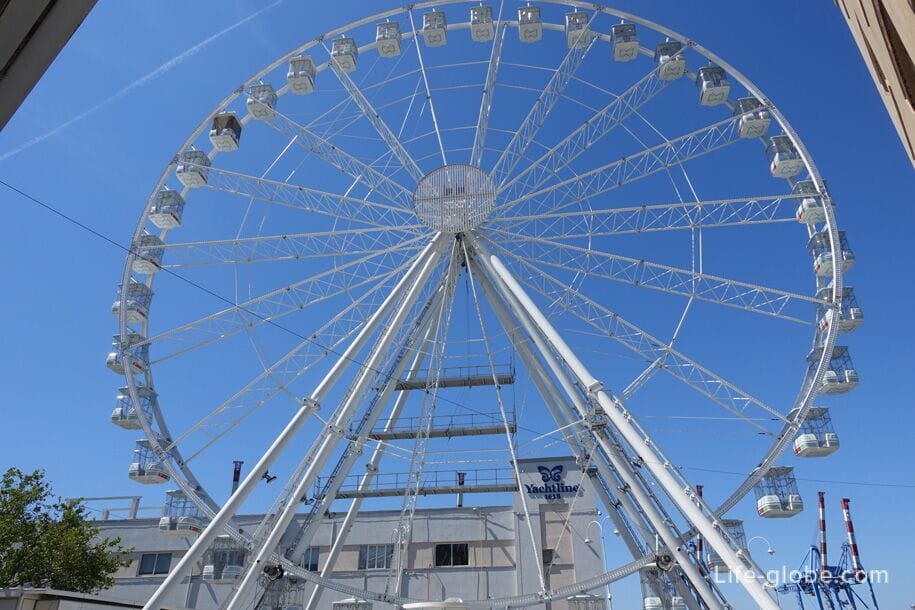
To promenade along the Old port, approximately in the middle, adjacent Caricamento square (Piazza Caricamento), the main decoration of which is the Palace of San Giorgio (Palazzo San Giorgio) is one of the most important, and, no doubt, a wonderful historical buildings of Genoa, composed of two parts: the older part is a typical example of medieval civil architecture of the Renaissance and the bright part facing the sea, with facades completely covered with frescoes.
Currently, the Palazzo San Giorgio houses the administration of the Port of Genoa. Some rooms can be visited. Website: palazzosangiorgio. More about the San Giorgio Palace...
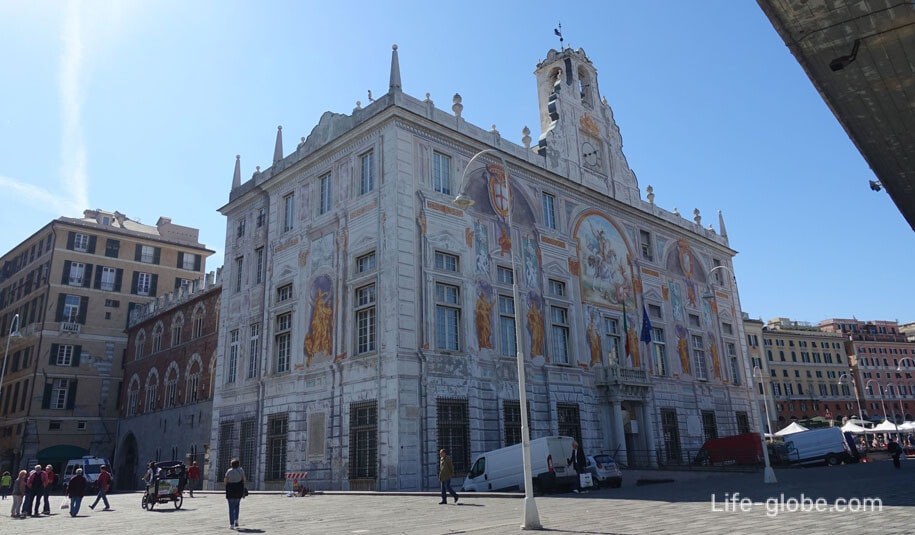

Photo of the Karikamento Square

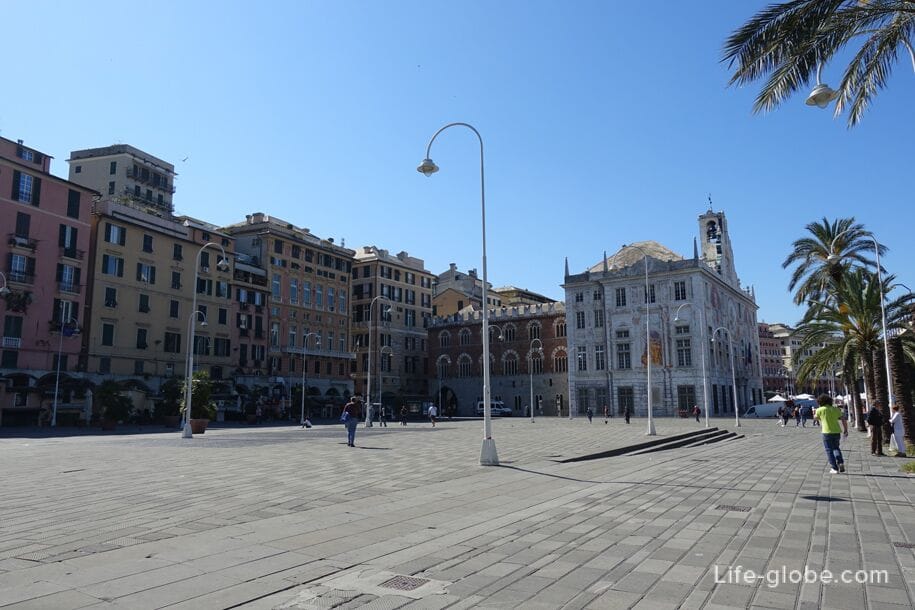
The most visited square in Genoa is Piazza De Ferrari, which connects the historical center and the more modern part of the city.
The square has an irregular shape due to the union of two adjacent areas, which is also evidenced by the different architectural styles of buildings around the square.
The center of the square has been decorated since 1936 with the most famous fountain of Genoa, designed by architect Giuseppe Croza di Vergagni.
The main buildings around the square are: the Palace of Liguria (Palazzo della Regione Liguria), formerly known as the Palace of the Italian General navigation, built between 1912 and 1923; the Ducal Palace (Palazzo Ducale), which is one of the main historical buildings and museums of the capital of Liguria and the main facade overlooks the neighboring area Giacomo Matteotti square (Piazza Giacomo Matteotti). More about Ferrari Square...
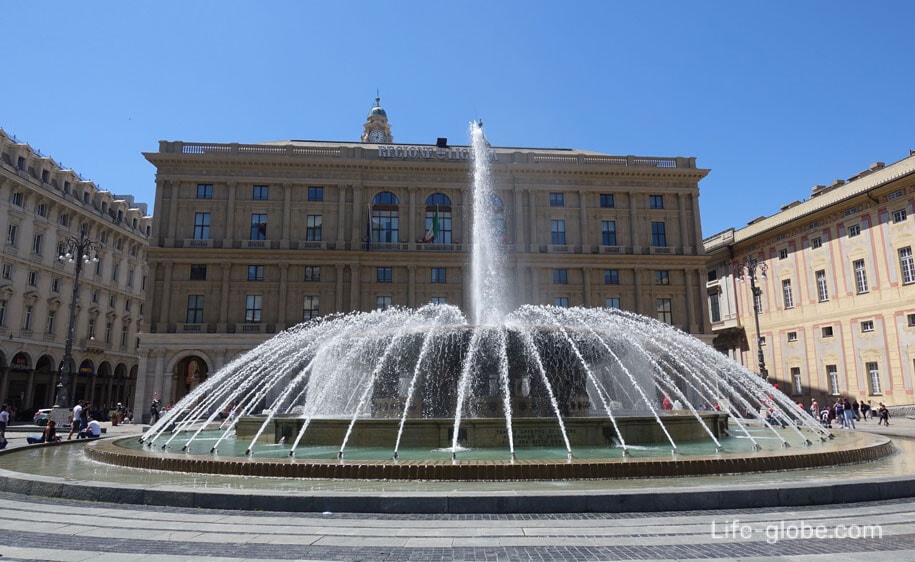
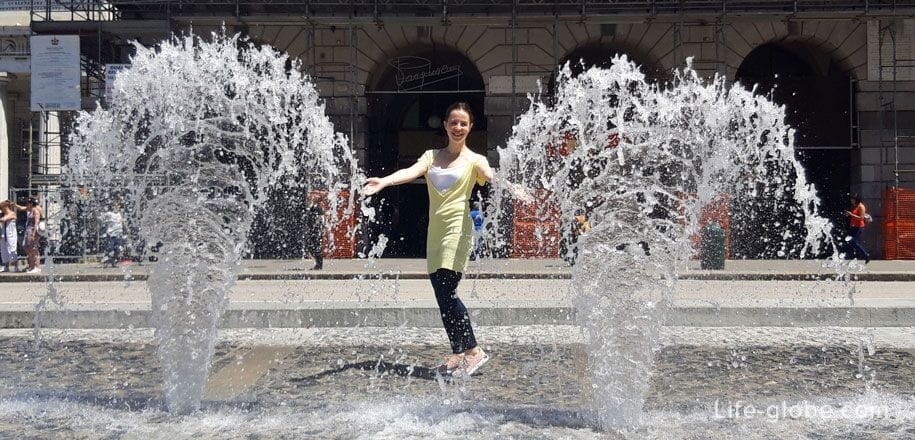
Another small, but bright and attractive square of the historical center of Genoa is Piazza Banchi, on which stands the Church of San Pietro in Banchi (Chiesa di San Pietro in Banchi).
The church in its current form dates back to the end of the sixteenth century, when it was built in 1572 on the spot where a religious building had stood many centuries ago, which was destroyed.
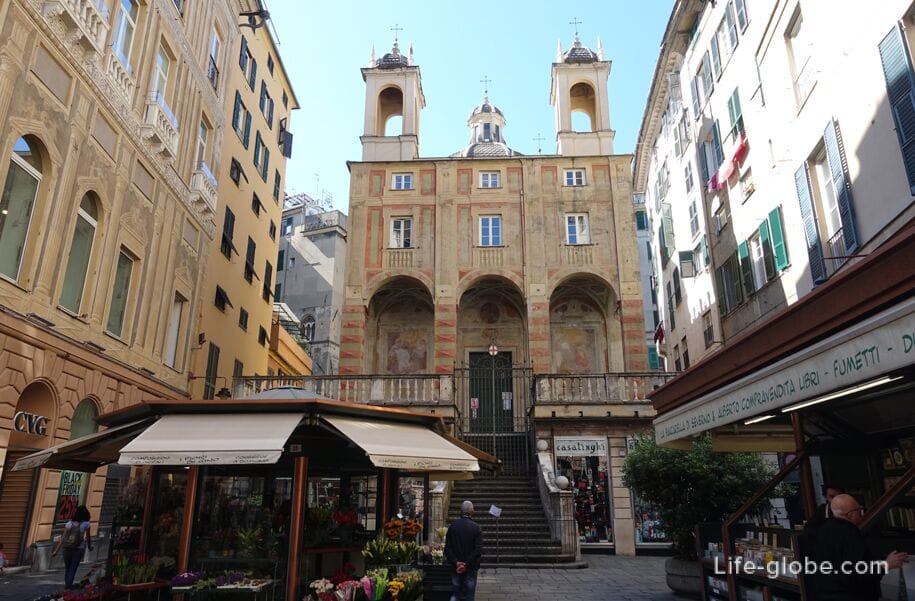

The main shrine of the historical center isCathedral of St. Lawrence (Cattedrale di San Lorenzo, Duomo di Genova).
The cathedral was consecrated by Pope Gelasius II in 1118, when the Duomo was not yet completed, and the facade was missing. Between the twelfth and fourteenth centuries, the cathedral was erected and then rebuilt as a fundamental medieval building with some later additions and reconstructions. The full-fledged construction of the cathedral was completed in the 17th century.
Entrance to the cathedral is free (free).
Within the walls of the cathedral, you can visit the cathedral's treasure museum for a fee. More about Genoa Cathedral...

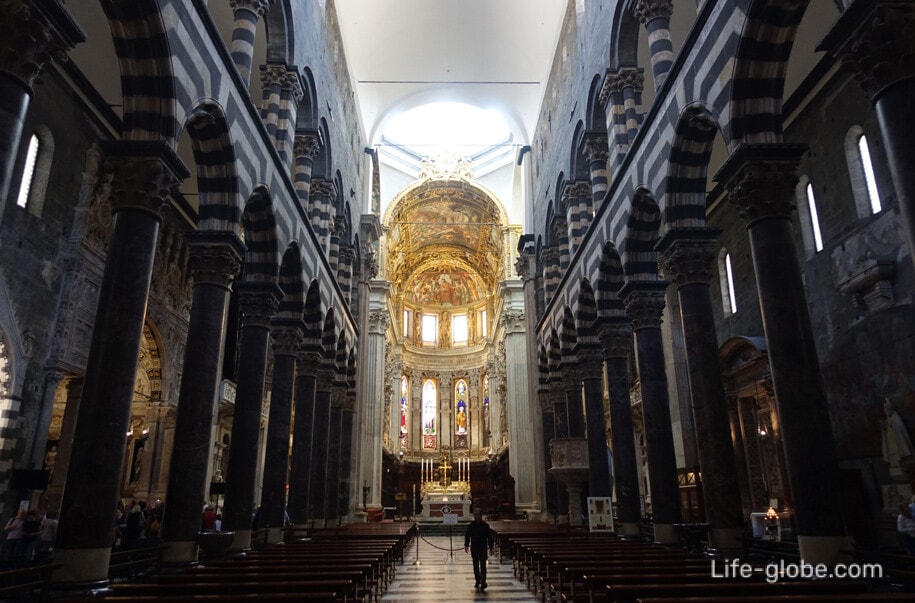
Piazza della Nunziata is one of the central squares of Genoa, located on the outskirts of the historic city center.
The square was built in 1155 on the occasion of the construction of the so-called Barbarossa walls.
Notable on the square are: Basilica of Santissima Annunziata del Vastato (Basilica della Santissima Annunziata del Vastato); Palazzo Belimbau (Palazzo Belimbau), originally built by the Genoese nobleman Antoniotto Cattaneo in 1594; Palazzo Nicolo Lomellini (Palazzo Nicolo Lomellini). More about the Nunziata Square...
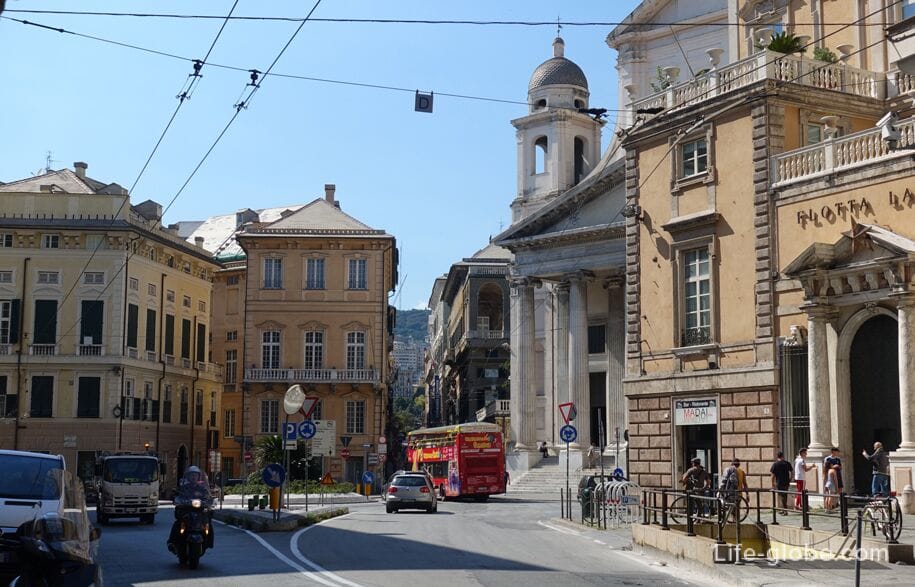
But the Nunziata Square is remarkable, first of all, because it is a link (and a kind of landmark) between the three most famous streets of the center of Genoa: Garibaldi Street, Cairoli Street and Balbi Street, notable for their luxurious Renaissance palaces, including the Red Palace and Palazzo Reale, which house museums.
Learn more about Garibaldi and Cairoli streets...
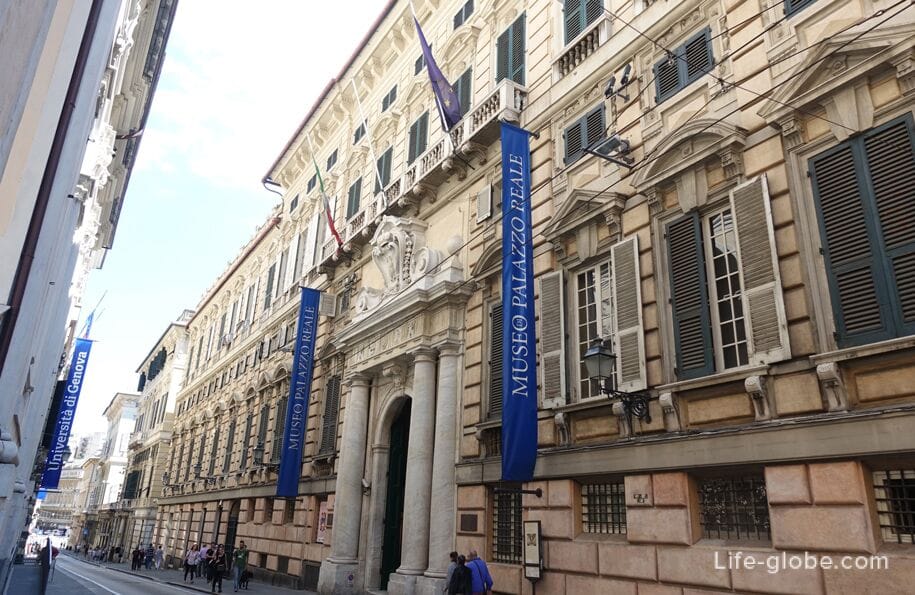

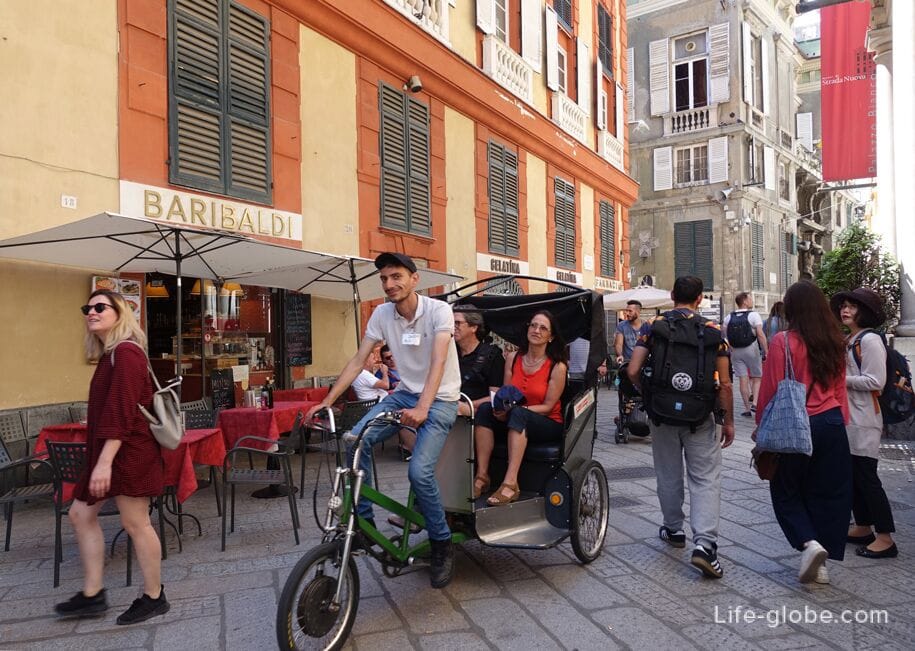
One of the most famous buildings of the old city is the so-called House of Christopher Columbus (Casa di Cristoforo Colombo), which is a reconstruction of the 18th century, the original medieval building in which Columbus may have lived in his youth.
The building consists of two floors: the first floor was used as the workshop of his father, Domenico Colombo, who was engaged in wool weaving and trade; on the upper floor there was a residential family house. According to written sources, Christopher lived here in the period, approximately, between 1455 and 1470.
Today it is a house-museum, which can be visited both separately and in a complex with other sights of the city. Learn more about the Christopher Columbus House...

Directly next to the Columbus house are the remains of the monastery of Sant'Andrea or St. Andrew (Chiostro di Sant'Andrea) of the 12th century, demolished in the 1900s for the construction of Dante Street.
Currently, only the loggia remains of the monastery, surrounded by a small garden, which, apparently, was rich in aromatic herbs.
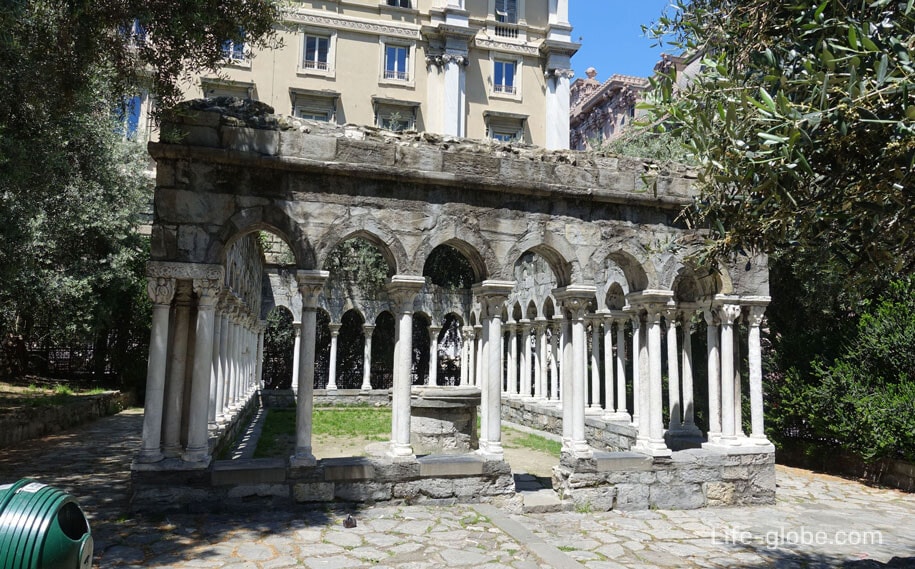
Along the perimeter of the old city of Genoa, some remnants of former fortifications have been preserved.
The most monumental are:
- The Sopran Gate or the Gate of St. Andrew (Porta Soprana / Porta di Sant'Andrea, Ligurian name: Pòrta de Sant'Andria) is the best preserved stone medieval gate, part of the second fortress wall of the 12th century.
The port of Sopran can be visited in a complex with other attractions. Learn more about the Sopran Gate...
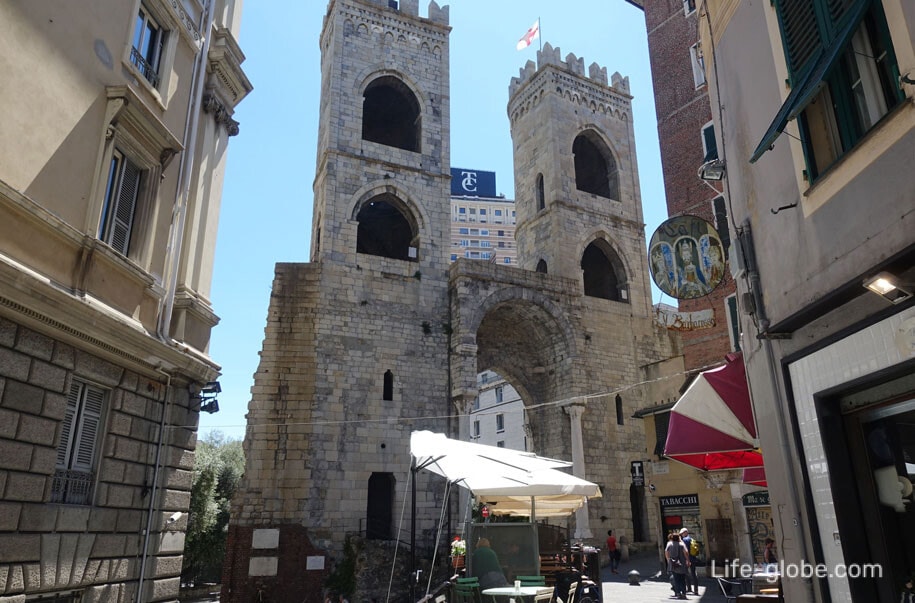
- the Vacca Gate (Porta dei Vacca), formerly part of the defensive structures of the 12th century and is the entrance gate to the city from the west. More about the Vacca Gate...
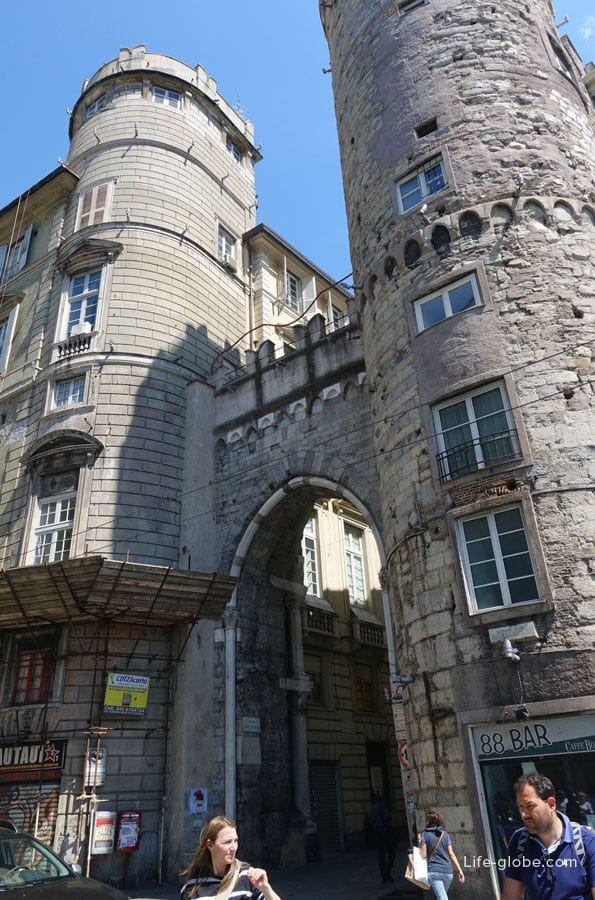
Also partially preserved is the wall - passage of the Murette (Passo delle Murette).
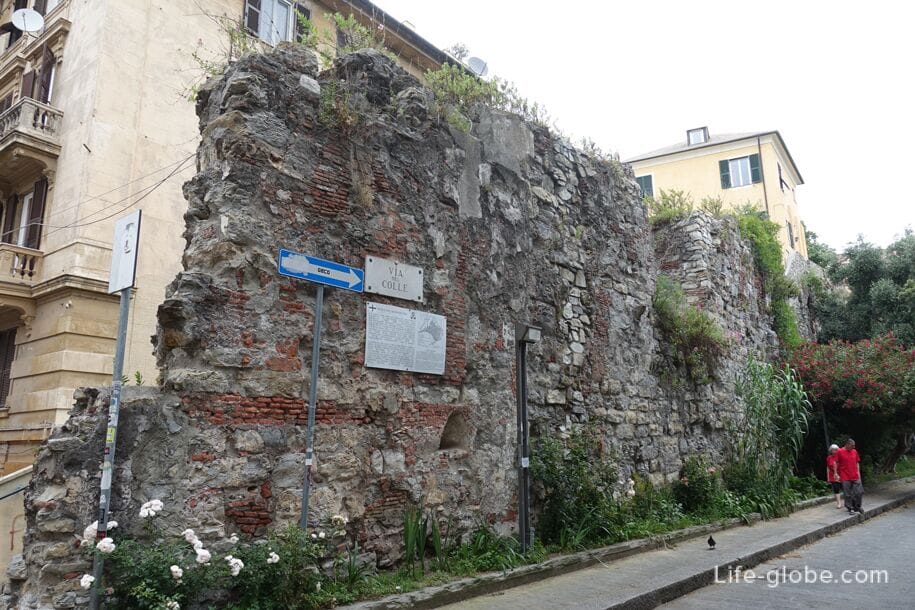
The Spinola Palace, now the National Gallery (Palazzo Spinola National Gallery), attracts attention, where the works of the greatest Genoese, Flemish and European artists, as well as a collection of ceramics, are presented in the atmosphere of the 16th-century palace.
Website: galleria-nazionale-di-palazzo-spinola.
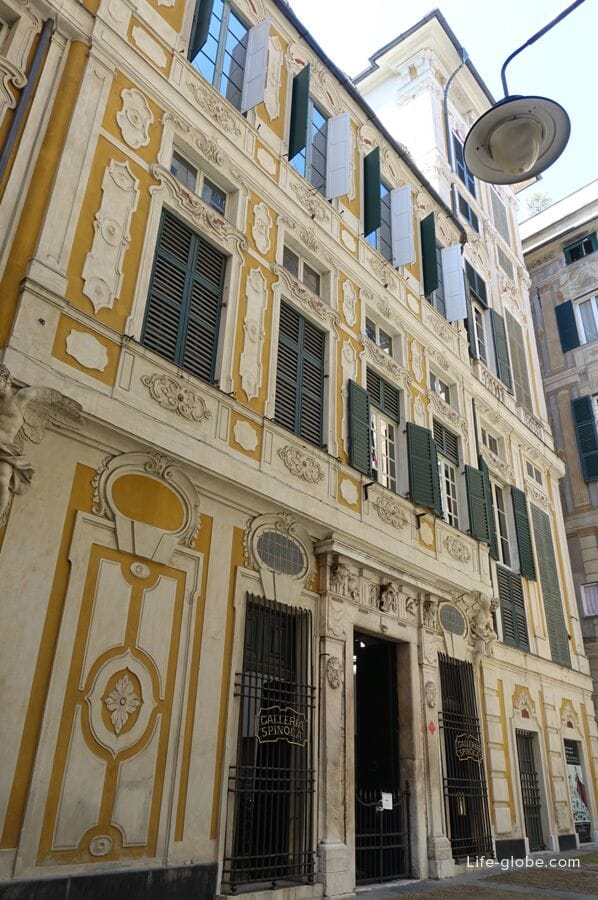
The square of the Santa Brigida Trench (Piazza dei Truogoli di Santa Brigida), which was built in 1656 during a severe plague that struck the city, with the participation of the Balbi family. The characteristic square is one of the recurring locations in films shot in Genoa in the second half of the twentieth century.
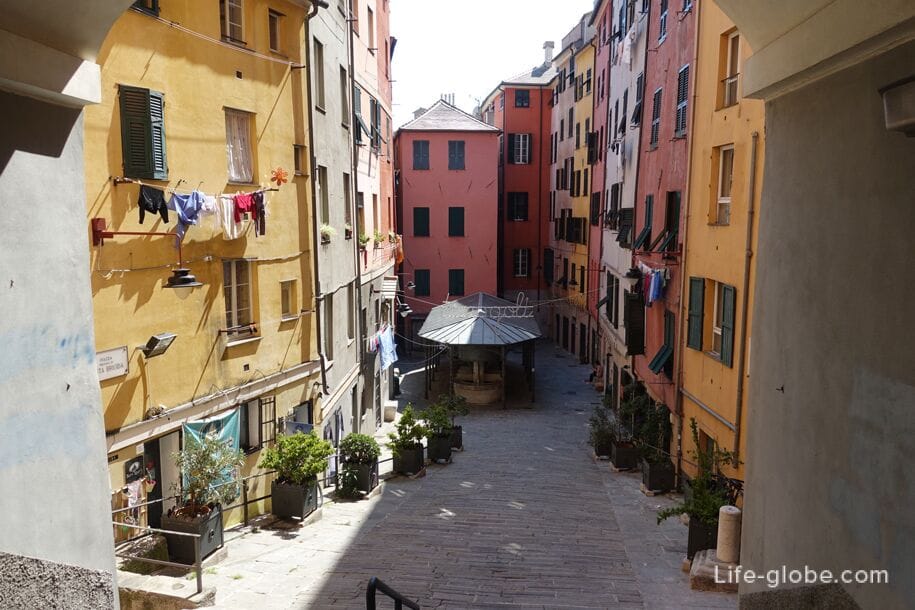
The complex of San Giovanni di Pre or Saint Giovanni di Pre, known as Commenda San Giovanni di Pre (Commenda di San Giovanni di Pré), which is one of the historical gems of Genoa and is a medieval complex of two churches and an ancient hospital.
The current complex was erected, starting in 1180, on the site where there was previously a church dedicated to the Holy Sepulchre, built according to some sources in 636, although the first documentary evidence dates back to 1098.
During its history, the complex has undergone several restructurings and reconstructions.
The complex consists of two Romanesque churches of San Giovanni di Pre, superimposed on each other, which make up the main part of the architectural building, and a three-storey commenda building, that is, a monastery and a hospice (a room on the ground floor), which performed a double function: a sea station for those waiting to sail to the Holy Land and a hospital, originally intended for pilgrims, and then for the sick and destitute of Genoa.
Today you can visit the historical premises and the church in the complex. More about the complex...

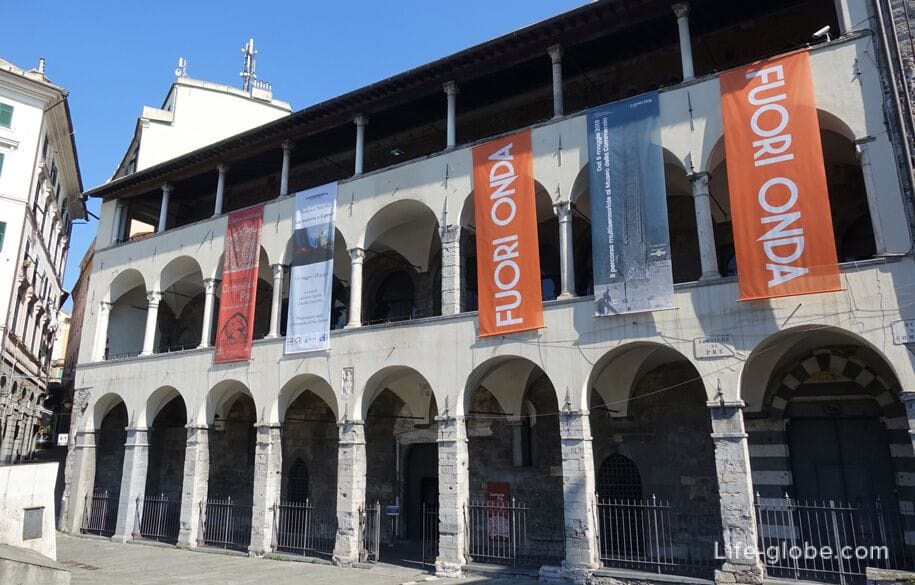
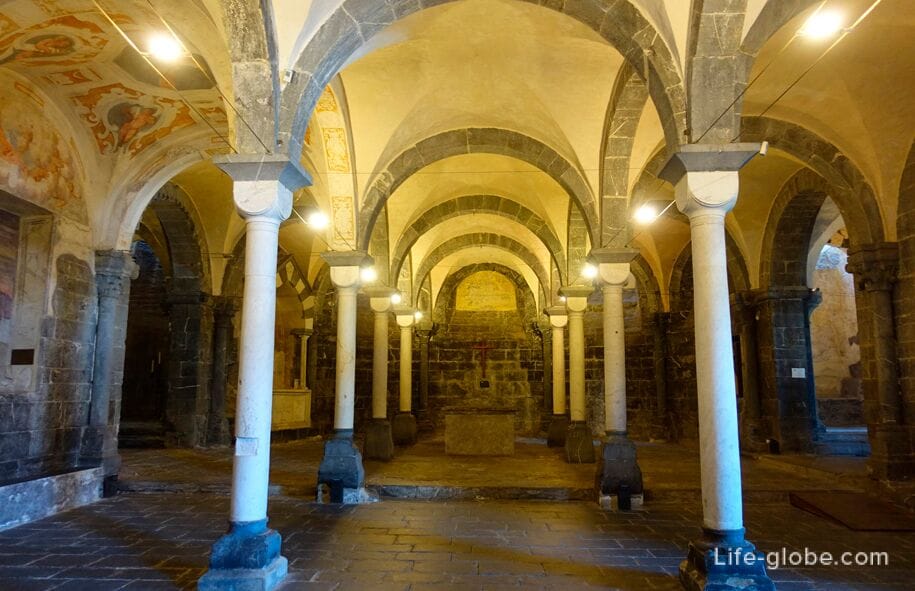
Near the train station of Principe, on the square Acquaverde (Piazza Acquaverde) stands the monument to Christopher Columbus (Monumento a Cristoforo Colombo).

At the Western edge of the historic center is the famous Villa del Principe (Villa del Principe), also known as the Prince's Palace, or Palazzo di Andrea Doria (Paxo do Dria Döia) - the biggest luxurious and noble residence of the centre of Genoa, built as a private country mansion that belonged to several generations of a family Doria Pamphili, original Genoese Admiral and statesman of the Andrea Doria.
A small garden adjoins the villa.
Of particular interest is the interior of the villa, which has preserved frescoes with mythological themes and tapestries, as well as a monumental staircase. The rooms are furnished with furniture from the seventeenth and eighteenth centuries, which also feature an extensive collection of paintings, including works by Sebastiano del Piombo, Domenico Piola and Bronzino.
Today there is a museum in the walls of the villa. Entrance is paid. More about Villa Principe...
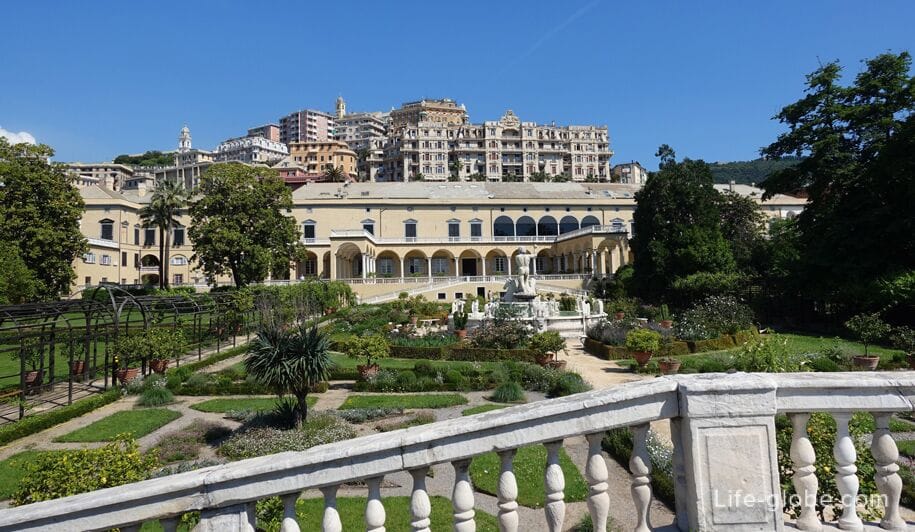
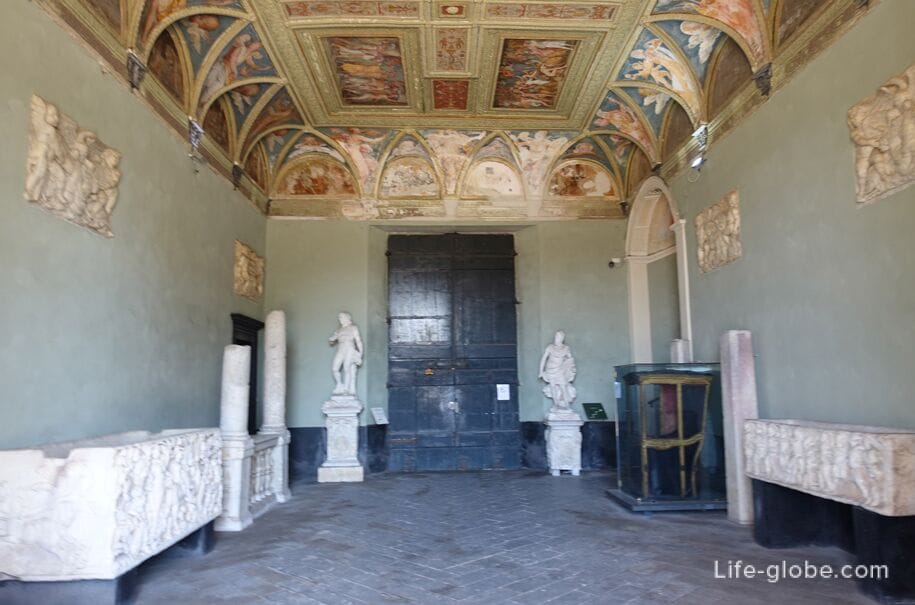
On the opposite from the Villa Principe side near the Eastern edge of the historic centre of Genoa, where is the hill of Carignano (Carignano), you can see the Church of St. Salvator (Chiesa di San Salvatore), which is located next to Museum of art sculpture and architecture "St. Augustine" (Museo di S. Agostino), located in the walls of the monastery of the same name.
Museum website: museo-di-santagostino.
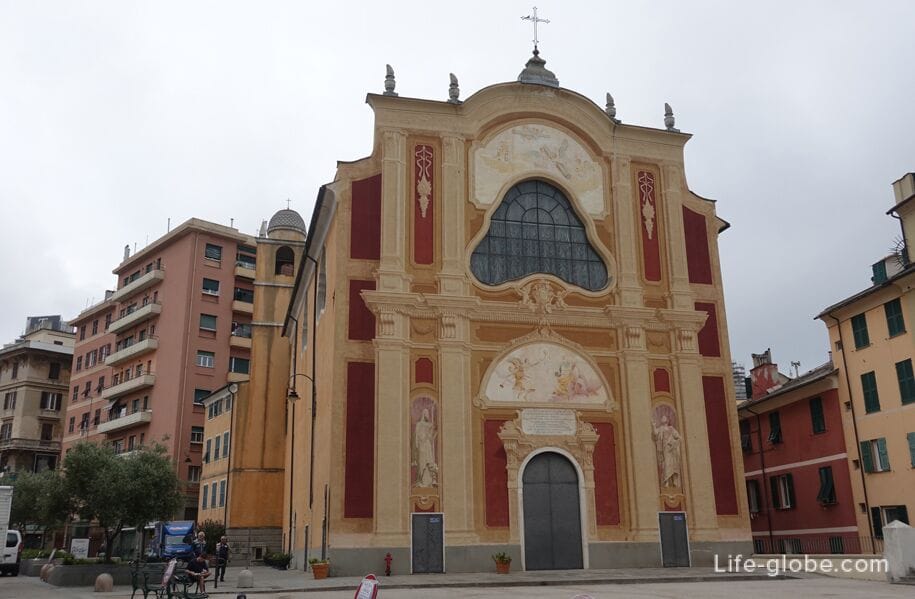
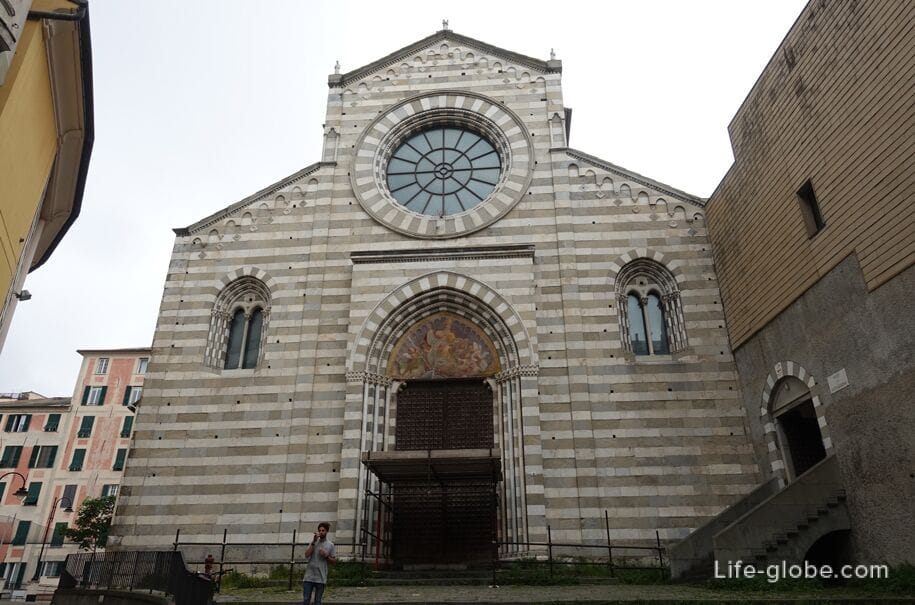
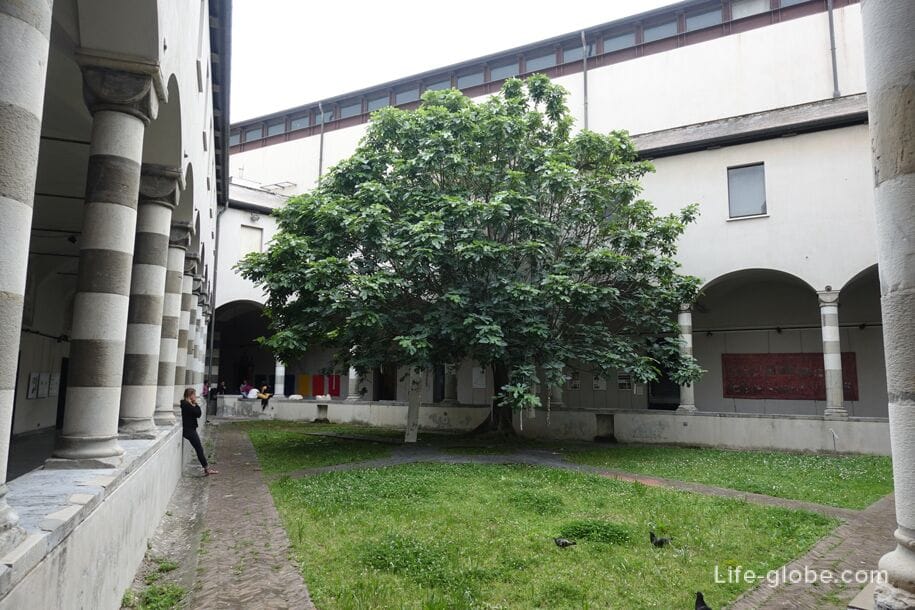
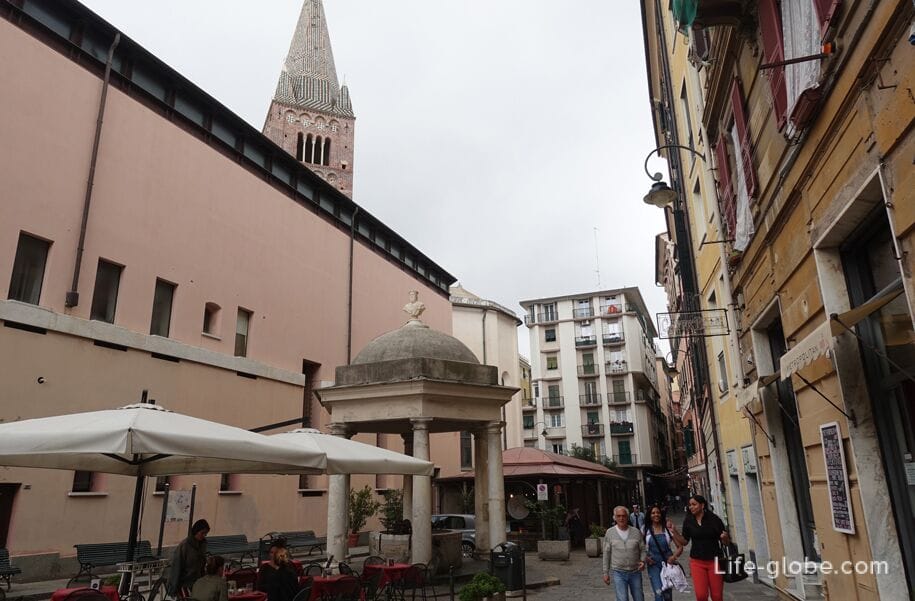
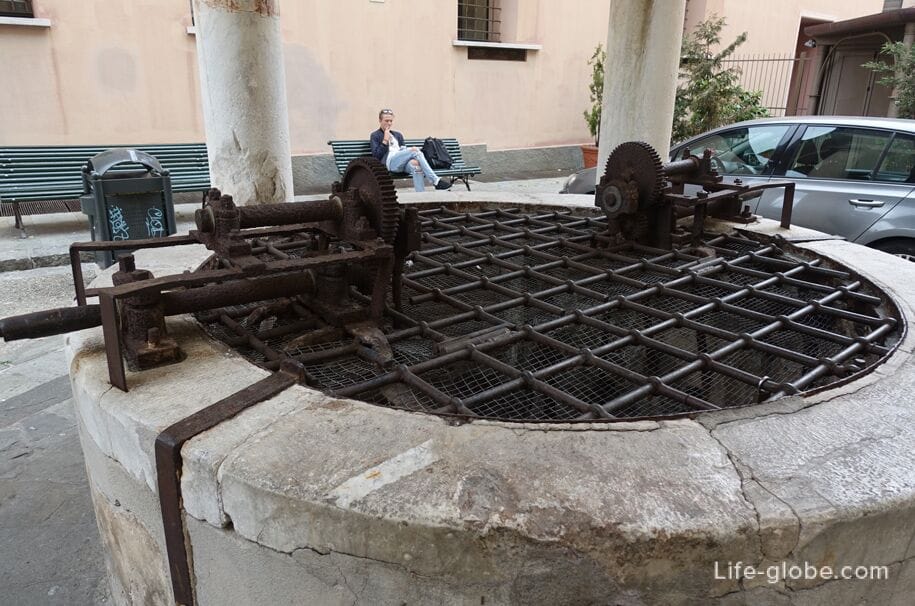
Since Genoa is located on the hills, from some points of the historical center of the city and near it there are wonderful panoramic views of the city, the port and the Mediterranean Sea.
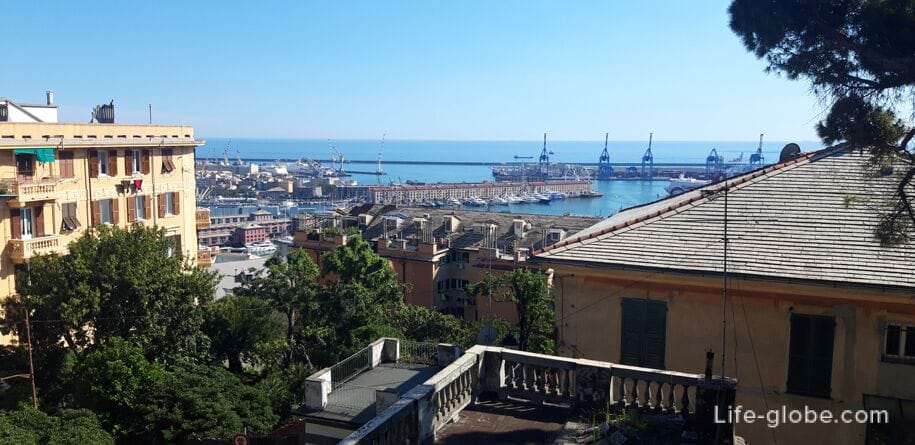
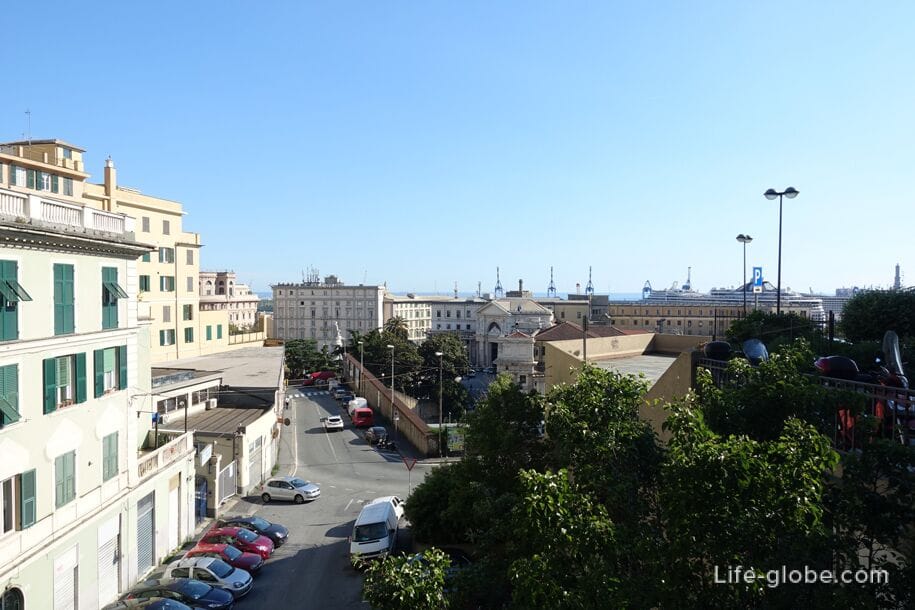
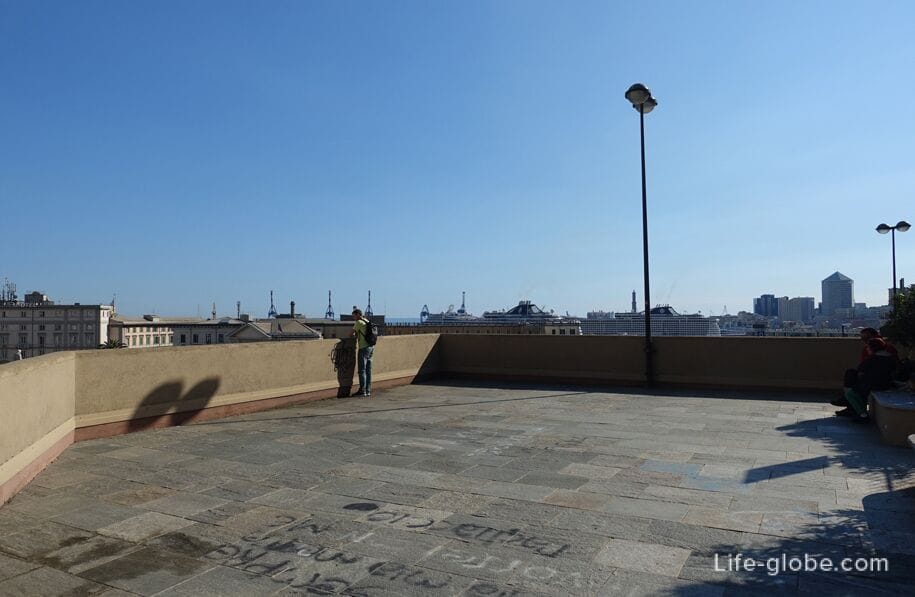
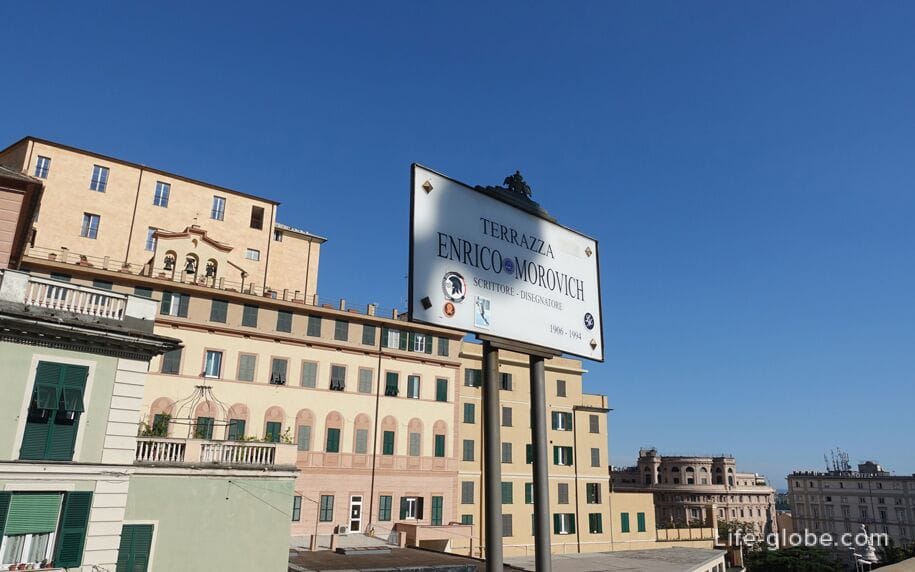

A popular observation deck-terrace is located in the Castelletto quarter, which occupies a hilly area that was outside the city before the construction of New walls in the 17th century. The observation deck (Spianata Castelletto) is especially popular in the quarter, located on the site of the dismantled fort and with a view of the Old Town and the Gulf of Genoa.
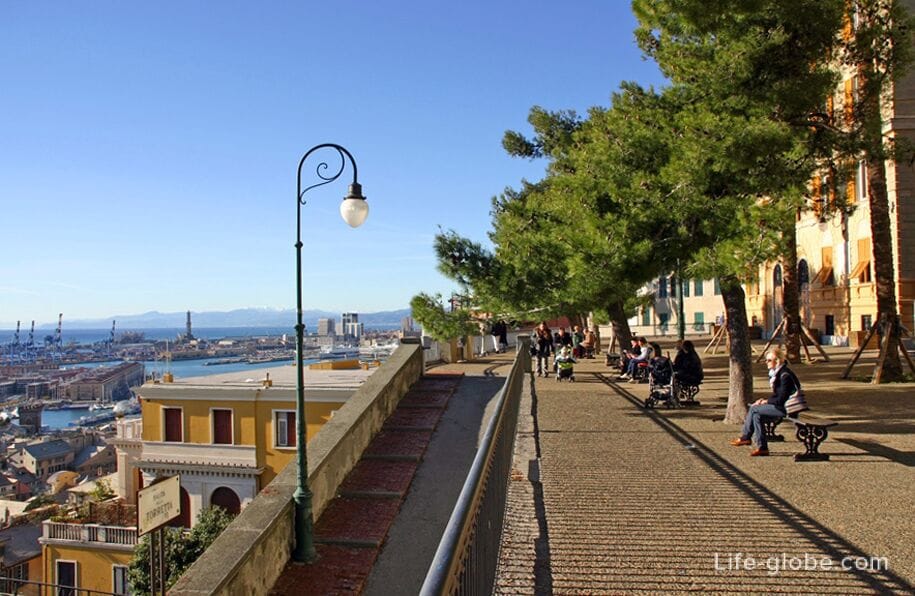
In part of the historical center of Genoa, you can take a ride on an excursion train or hop-on hop-off bus with an audio guide.
Excursions around Genoa, including bus tours, as well as tickets to museums, can be viewed and purchased here →
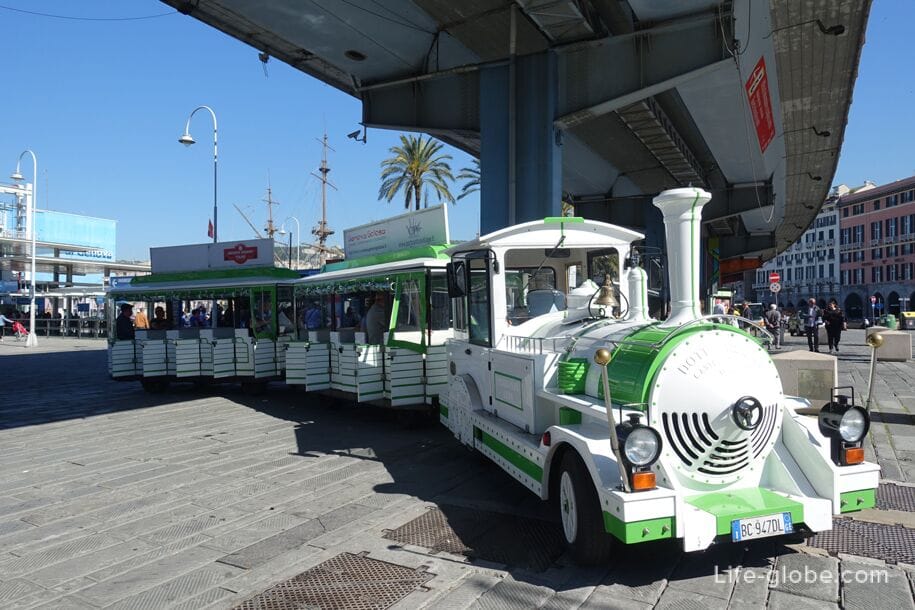
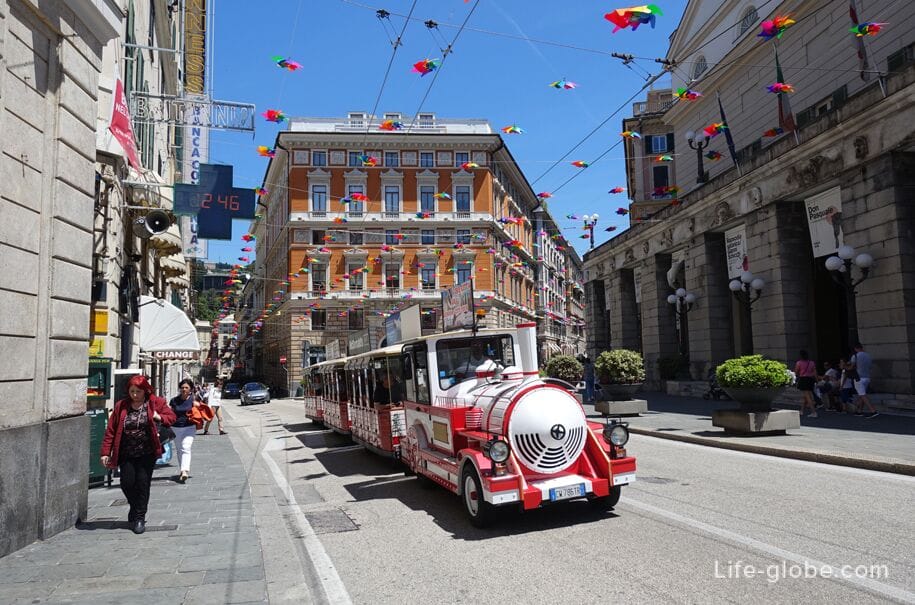
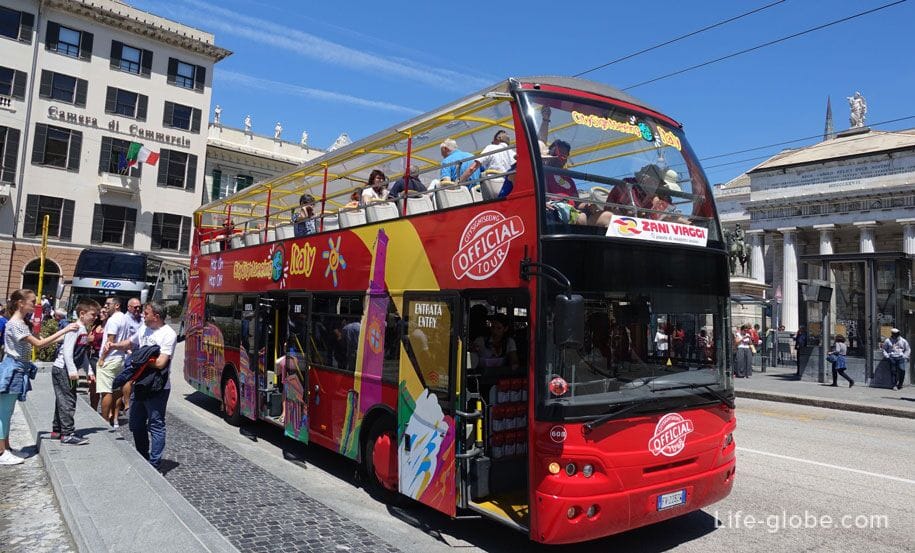
All accommodation facilities in Genoa, including in the historical center, near the beaches and more remotely from those, can be viewed and booked here
Photo of the center of Genoa
